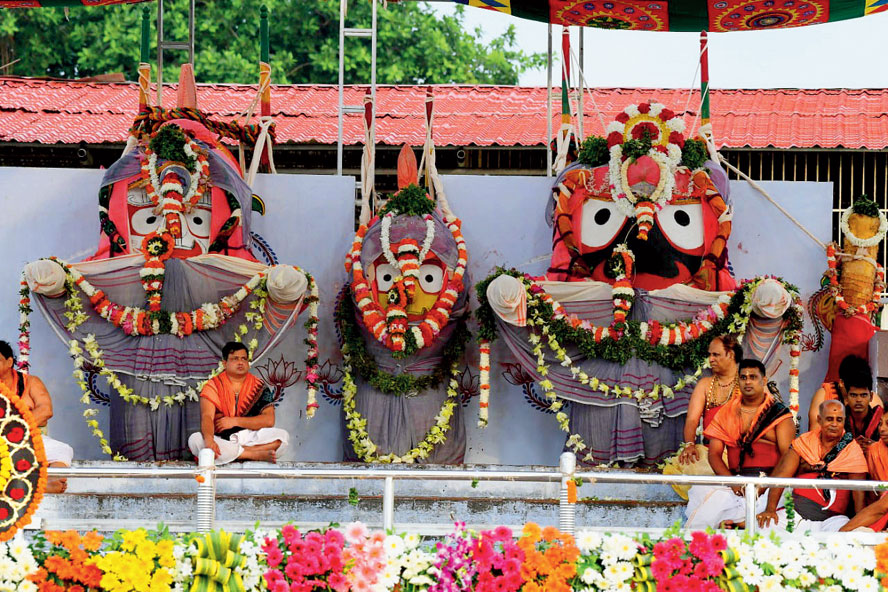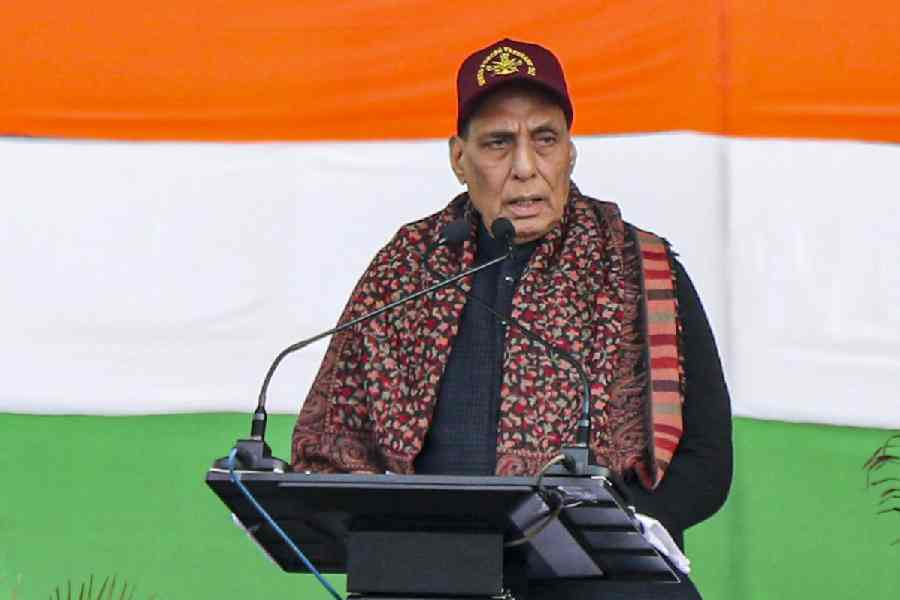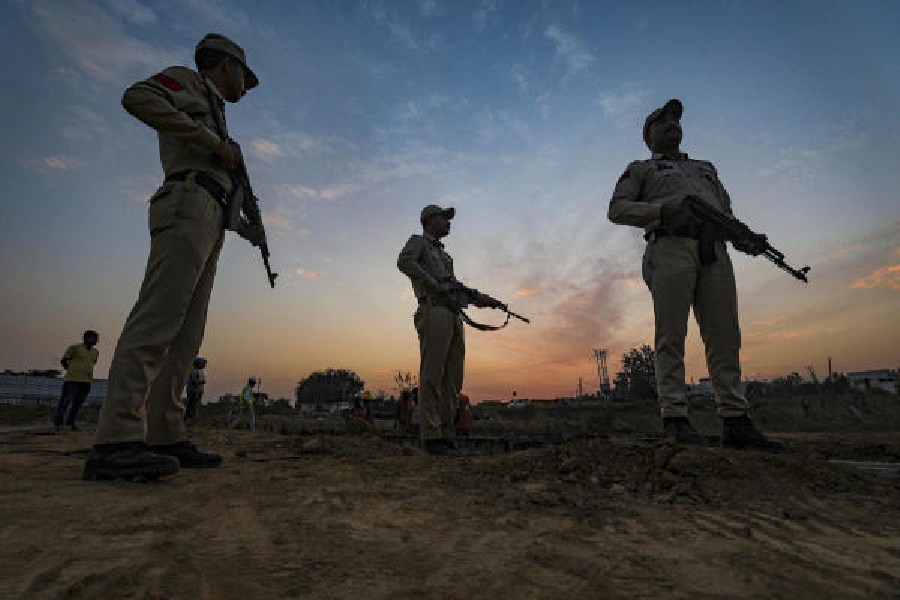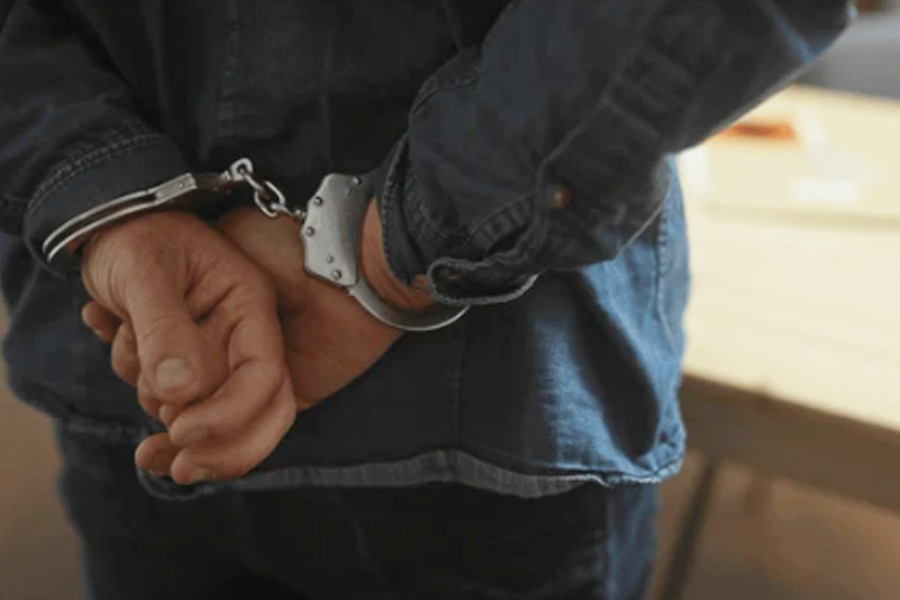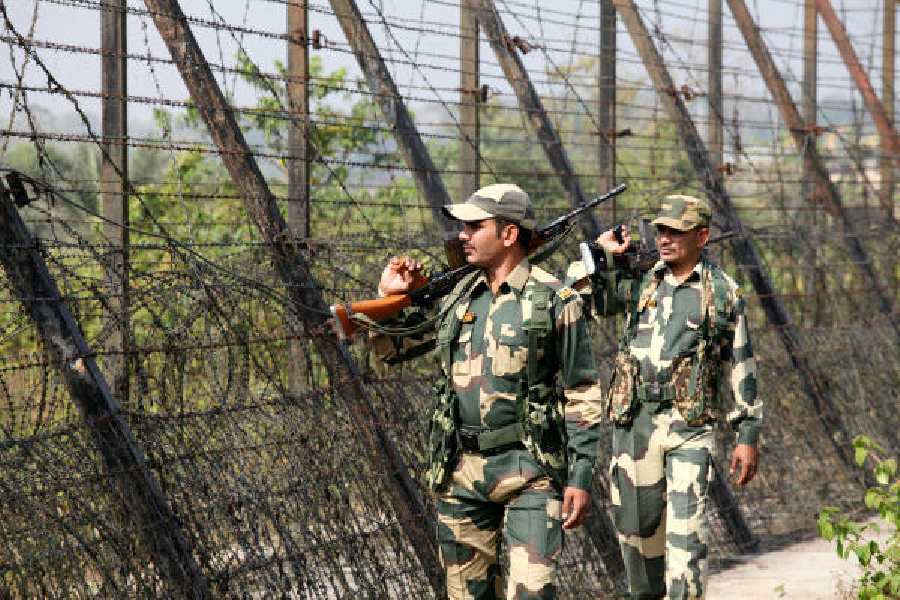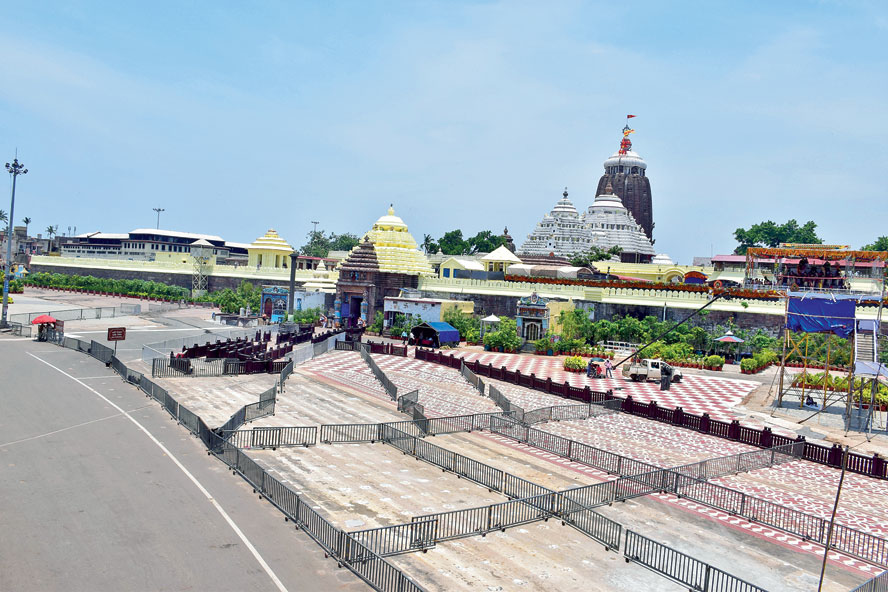
The empty Bada Danda ( grand road ) during the Snana Yatra Telegraph picture
The temple administration said the deities were carried from inside the sanctum to the bathing altar or snana bedi in the early hours of Friday. The process began at 1.40am.
During the Snana Yatra, the deities are bathed with 108 pots of water, which is a mixture of coconut water and scented extracts of flowers and other fragrant ingredients like sandalwood.
While Lord Jagannath bathed with 35 pots, Lord Balabhadra was offered 33 pots, Goddess Subhadra 22 and Lord Sudarshan 18. After the bathing ceremony, Mudirasta swept the floor where the deities are seated. Then the idols were decked out in gaja besa (attire for an elephant).
Pandit Surya Narayan Rath Sharma, an expert on Jagannath culture, said, “In the annals of Lord Jagannath, such a situation has never been witnessed. It’s painful to see not a single devotee visiting Puri to have a darshan of Lord Jagannath during Snana Yatra. However, we have to accept the reality. We are happy that people are watching the rituals on their television sets.”
Senior servitor Rama Krushna Das Mohapatra said, “After the bath, the deities will fall sick and run a temperature. They will have to be shifted to a secret place known as anasara ghara (quarantine house), where they will undergo treatment for 15 days. The devotees will not be able to see the deities during this period. Once they are cured, Lord Jagannath and his siblings will emerge from the temple and embark on a journey to their aunt’s house, the Sri Gundicha temple, in the chariots.”
Chairman of the Shree Jagannath Temple Managing Committee and scion of Puri’s erstwhile royal family Gajapati Dibya Singh Deb on Friday skipped the chhenra-panhara (sweeping the floor) ritual during the Snana Yatra festival, his most important duty as the first servitor of Lord Jagannath.
Snana Yatra is the prelude to the Rath Yatra festival, where devotees pull the chariots of Jagannath, his brother Balabhadra and sister Subhadra, which is scheduled to begin on June 23.
Deb, 67, said he skipped the ceremony in adherence to the lockdown guidelines, which prohibit the gathering of more than seven persons for religious purposes and also direct people above 65 years not to step out of their houses. “I decided to stay in the palace in compliance with lockdown guidelines,” he said.
“It’s Gajapati’s personal decision. Earlier, we have seen the king’s representatives perform the ritual in his absence. But Gajapati Dibya Singh Deb was always a regular in performing his duty. It would have motivated lakhs of devotees had he come personally and performed the ritual,” said Jagannath Swain Mohapatra, the main badagrahi (one of the chief servitors) of Lord Jagannath.
In the absence of Deb, his representative Mudirasta performed chhenra-panhara and other rituals connected with Snana Yatra.
This was only the second time that Deb skipped ceremony since he inherited the responsibility of serving the lord as his first servitor.
In 1976, he had not been able to perform this duty as he was in the US pursuing his studies.
In order to avoid congregation of devotees in Puri, the district administration has clamped prohibitory orders under Section 144 of CrPC at many places in the town, including the Bada Danda (the road in front of the shrine). These orders will remain in place till 2pm on Saturday. Generally, people can see the deities during the Snana Yatra by standing outside the temple boundary as the Snana Mandap is visible from outside because of its height. According to the arrangements made by the Odisha government, the state information and public relations department captured the proceedings of Snana Yatra and then shared it with private TV channels.
Snana Yatra rituals began in the wee hours of Friday sans devotees as decided by the temple administration in consultation with the various bodies representing temple sevayatas (servitors). All the rituals connected to Snana Yatra will conclude around 5am on Saturday.

